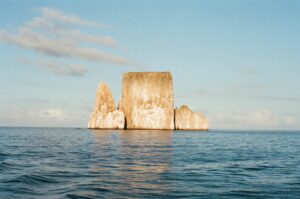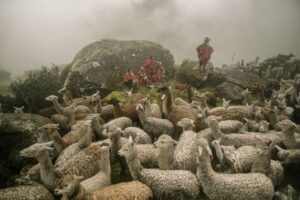Toitū te marae a Tāne-Mahuta, toitū te marae a Tangaroa, toitū te tangata.
This is a whakatauki, a Māori proverb widely known in Aotearoa (New Zealand) that means “if the land is well and the sea is well, so too are the people”.
The literal truths of this proverb are obvious: our lives are reliant on clean water, healthy soil, and fresh air. More and more research highlights how our mental health is connected to the natural world, as it reduces stress while inspiring creativity and joy. This reflects the spiritual beliefs of the Māori people, who have deep relationships with the land and the sea, as well as the plants and animals who also call these lands home. If our native species are threatened, so is the wellbeing of Aotearoa’s people. One of these species is the smallest and rarest dolphin in the world, the Hector’s dolphin, with one of its subspecies, the Māui dolphin, critically endangered with only 55 individuals left.
The Hector’s dolphin has different Māori names, depending on the region. Tutumairekurai and tūpoupou are common, while pahu is often used and has been adopted by Sea Shepherd New Zealand in their campaign to protect these dolphins. An old Māori belief is that spirits that have passed may come back as tutumairekurai, so they are viewed as extensions of the family, worthy of deep respect. Historically, these dolphins were so common that it was laughable to think that they would ever be classed as endangered. Now only 10,000 remain in the waters surrounding Aotearoa, meaning they are “nationally vulnerable”.
Naturally curious and highly intelligent, pahu are coastal dwellers, not known to travel more than 20 nautical miles from shore, so they are commonly seen by swimmers, kayakers, and recreational boaters. They live in small familial pods and generally remain in one region, a behaviour known as site fidelity. It is easy to see why they are viewed as spiritual creatures by the Māori and how they have become a national icon, known as the “kiwi of the sea”.
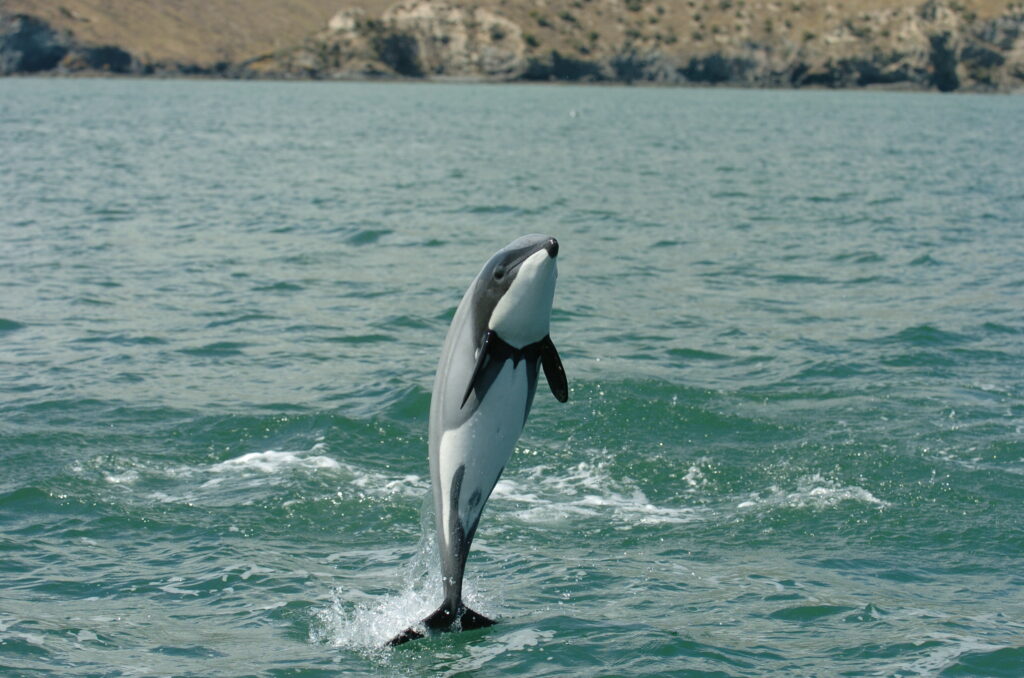
The first time I was lucky enough to interact with them, I was swimming at Waikuku beach as a child. The other swimmers around me evacuated the water having mistaken these dolphin fins for shark fins, whereas I felt like swimming out further to see if they’d play with me. It was a few years later when I finally got my chance to interact with them while on a friend’s recreational boat in Banks Peninsula, where there is a high concentration of Hector’s dolphins due to its many small bays creating protection for breeding and a range of fish species for their food. While the engine had stopped and we were enjoying the scenery in silence, we heard a soft breathing noise — which is where the dolphins get the name pahu — and we saw their distinctive black fins approaching us slowly. Up close, Hector’s dolphins often roll sideways underwater to get a good look at you while passing your boat, or they stick their heads up out of the water to watch you from a distance. When I saw one of those bright, intelligent eyes looking straight into mine, my love for these beings deepened. Now I relish every opportunity to get out on the water and spot them, while also helping to monitor their population and threats as a volunteer for Sea Shepherd New Zealand.
The curiosity and social nature of Hector’s dolphins make for a great tourist attraction, especially around Banks Peninsula. Companies offering dolphin tours are usually well-instructed in how to approach the dolphins, always careful to minimise the risk of striking them, and to not make loud noises or feed the dolphins when spotted. However, research has indicated that an increase in boat traffic over time has displaced the number of Hector’s dolphins in the Akaroa region. Furthermore, one company offers a “swim with dolphins” tour, despite the fact that swimming with the dolphins can disrupt their natural behaviours, and increase the risk of humans touching and damaging the dolphins’ sensitive skin. Although I believe that Aotearoa’s wildlife and natural beauty should be shared by all, and that tourism raises awareness of the plight of the Hector’s dolphins, if tour boats are part of the problem, I wonder whether we should cease their operation to provide safer and quieter habitats?
Swimming with Hector’s dolphins remains legal — unless there are calves in the pod — although many companies have ceased providing “swim with dolphins” tours due to concerns over the reduction of numbers of dolphins in particular areas. To combat the amount of marine traffic disturbing the Hector’s dolphin population, the government issued a moratorium on new permits and expansions for tour boat operators in Akaroa harbour in 2016, which is due to expire in 2026. Whether they will extend the moratorium is unknown.
Earlier this year, the international sailing race SailGP took place in Lyttelton Harbour, the largest commercial harbour on the Banks Peninsula. Lyttelton Harbour is a marine mammal sanctuary and home to a pod of Hector’s dolphins. The organisers of SailGP knew this area was a sanctuary and that significant protection measures would be in place, however they chose to go ahead with the race despite pressure from environmental NGOs to hold it elsewhere. Protection protocol required that if any Hector’s dolphins were seen near the course the race would be stopped until the dolphin had not been seen for 20 minutes. This was agreed to by the SailGP representatives, yet when dolphins were seen in the race area on the opening morning, and the entire day of racing was subsequently cancelled, their response turned to calling the protection measures “extreme” and “disappointing” instead. It was inappropriate to hold a race with boats that travel at such high speeds within a marine mammal sanctuary, yet this is not the only threat the Hector’s dolphins of Lyttelton Harbour have experienced.
In 2018 the Lyttelton Port Company (LPC) wanted to build a new cruise ship berth so that bigger ships with more passengers could enter Lyttelton. The methods they proposed for construction involved noisy pile driving, which was expected to cause adverse effects on the wildlife populations over time. In particular, it would have decreased the dolphins’ ability to echolocate and possibly led to permanent hearing damage. The project was halted while the LPC continued research into the potential harm to the local dolphins, then construction began in 2019 with a “marine piling management plan” including fewer piles used, along with “soft start” construction that would give the animals time to leave the area, and a pause on work required when any dolphin was seen near the site. Construction continued in the face of extensive protest from local communities and the concern of scientists, who proved that the number of Hector’s dolphins dropped in areas with smaller-scale construction, which disrupted their normal breeding and feeding behaviours.
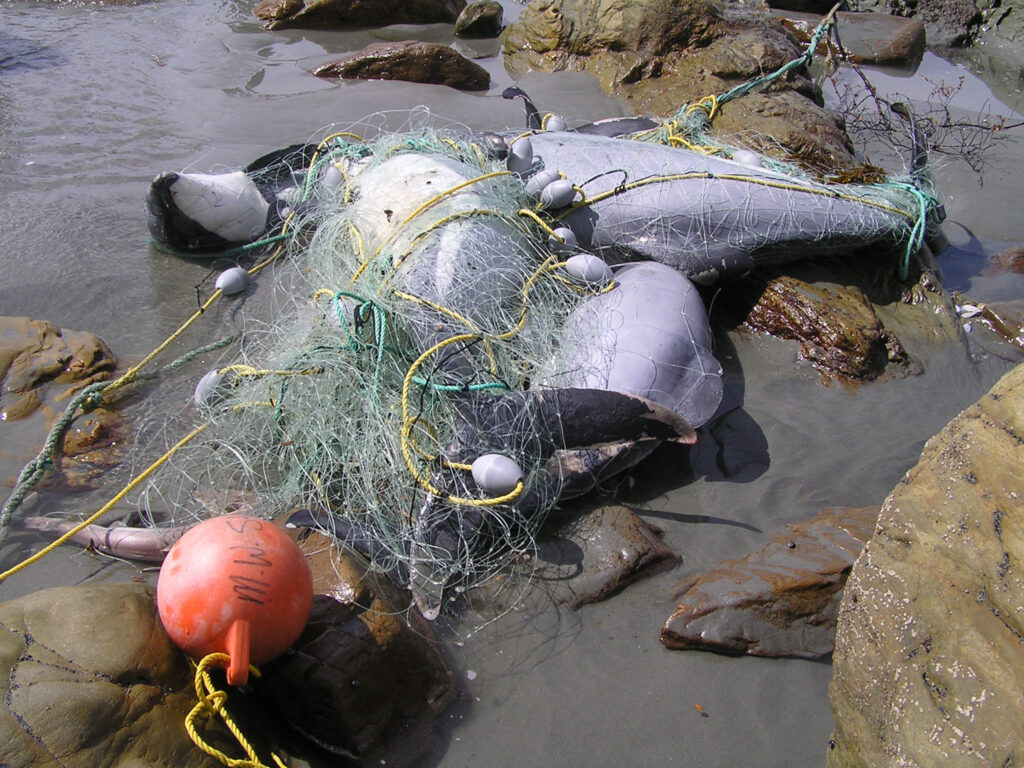
Despite the significant presence of boats, they are not the biggest threat to Hector’s and Māui dolphins. Every year, fishing nets kill between 100 and 150 Hector’s dolphins, the most common being set nets, while Hector’s dolphins have been bycatch in trawl nets and drift nets too. A threat management plan was introduced in 2008 outlining ways to minimise threats to the dolphins, and was most recently revised in 2020 with further bans on fishing gear at certain distances from the shore.
Through my work with Sea Shepherd New Zealand, I have observed how using fishing gear further out to sea isn’t enough. I have seen vessels trawling in the middle of a large pod of Hector’s dolphins who were gathering to eat the fishers’ desired catch just outside the two nautical mile ban limit. If there is fishing happening anywhere within that 20 nautical mile habitat range, the dolphins are threatened and will be until there is no more commercial fishing in the areas they populate. It may seem like an extreme measure, but fishing nets pose the greatest risk to the dolphins, and therefore need to be a primary focus of regulation. Fishing gear is also a primary source of plastic pollution, another significant threat to marine wildlife.
It is a legal requirement that commercial fishing boats report any accidental bycatch of Hector’s and Māui dolphins, with this information then published on the Department of Conservation website. However, this assumes that commercial vessels willingly and accurately volunteer this information. In the experience of most NGOs and individuals campaigning for Hector’s protection, this is rarely the case. To minimise the risk of misinformation, NGOs and dolphin researchers long suggested the use of cameras onboard fishing vessels, yet they were not implemented until the Labour government in late 2023. Since the cameras were installed, the number of “reported” deaths of Hector’s and Maui dolphins increased, particularly deaths due to bycatch. This indicates that dolphin deaths were not previously reported, rather than not occurring at all.
Although the cameras were a positive step by the government to protect native marine species, Aotearoa’s most recent elections resulted in a new government that prioritises economic growth over the wellbeing of the environment. The Oceans and Fisheries Minister has indicated that although the improvement of fisheries’ sustainable practices was a priority, the use of cameras was not determined a necessary precaution.
Toitū te marae a Tāne-Mahuta, toitū te marae a Tangaroa, toitū te tangata. This whakatauki is used on the website of the Department of Conservation, in a section that talks about their desire for thriving ecosystems and a dedication to preserving our Aotearoa’s resources. If Aotearoa is to maintains its global image of being a clean and green country that prides itself on its natural beauty, difficult decisions and sacrifices need to be made to protect native species, which is both a governmental and individual responsibility.
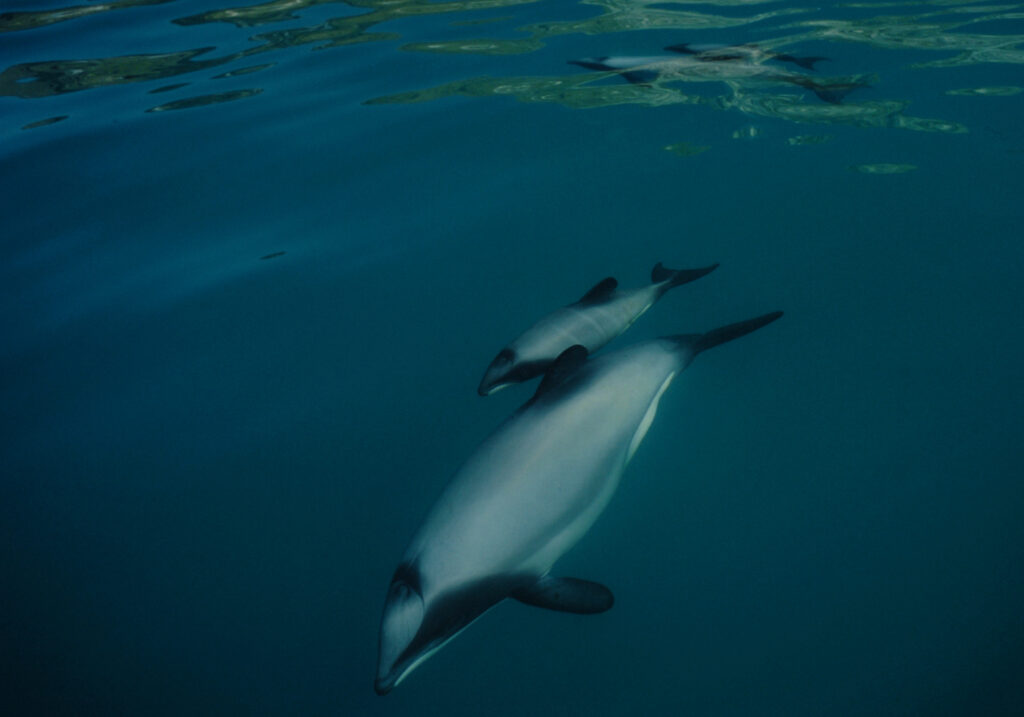
Although there is generally a lot of education around dolphins in Aotearoa, many recreational boaters aren’t aware of the research around the protection of Hector’s dolphins, particularly in regard to safe boating behaviour. Constant reminders would be helpful, like warnings posted at boat ramps and marinas reminding boaters of safe speeds and the importance of keeping an eye out for dolphins. These are a few of many possible steps that could be taken by the government, but the ugly truth is that profit, pleasure and convenience are often put ahead of other species, native vegetation and thus collective interspecies wellbeing.
In my perspective, the sea is not well, and Aotearoa cannot be well until it protects vulnerable marine species like the unique Hector’s dolphins. They deserve better. As individuals, we cannot control the government’s decisions more than passionately lobbying for what’s right, but we can make everyday choices to improve the wellbeing of animals and their habitats, and sacrifice our own pleasure for the future of a species. Is a sailing race, cruising around in a rental boat or having a piece of fish on our plates worth the risk of harming the Hector’s and Māui dolphins? For the curious and intelligent mammal that captured my heart all of those years ago, I say no.
Lauren Duke is a seafarer, activist and writer. She lives in Aotearoa (New Zealand) close to the sea.










